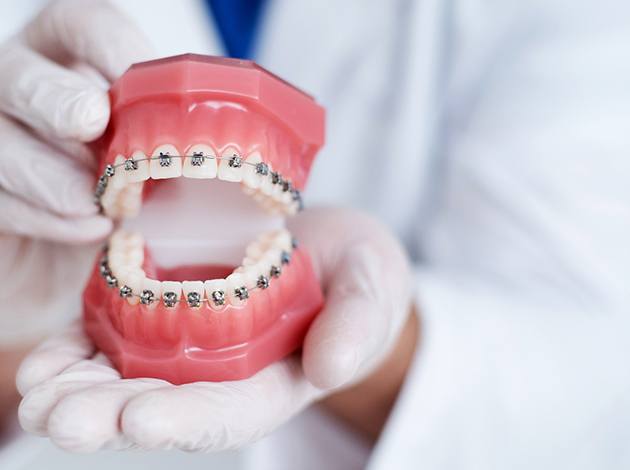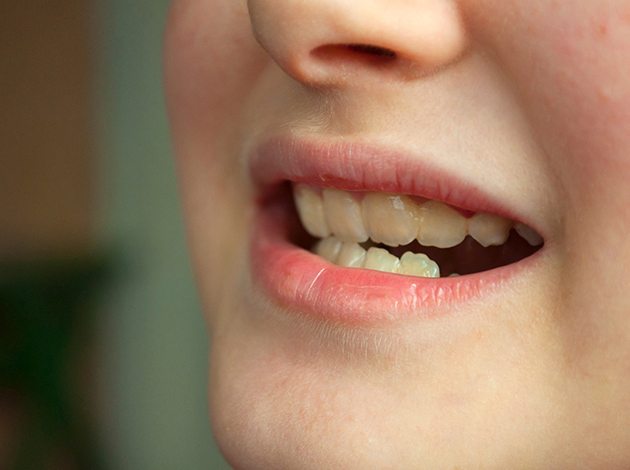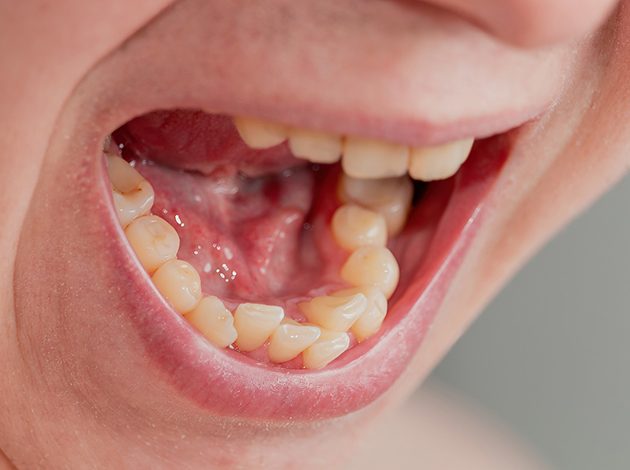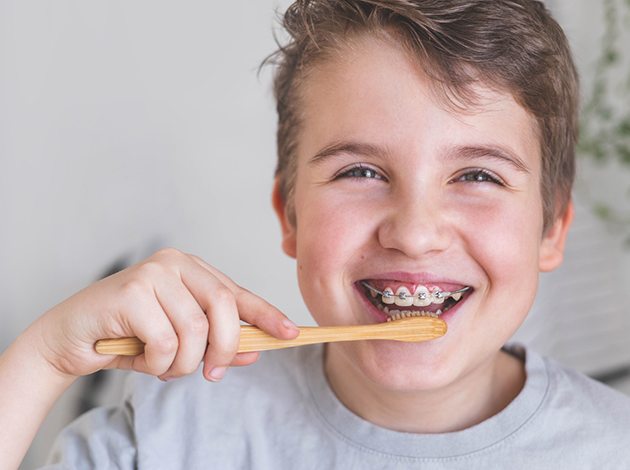Traditional Braces – Dublin, CA
Straighten Your Smile with Traditional Style
There’s a reason when most people hear the word “orthodontics” they picture metal brackets and colored rubber bands. Not only have traditional metal braces been around for over a century, but they are one of the most reliable methods for crafting a gorgeous, straight smile. At Waterford Dental Pediatric and Orthodontics, we continue this time-tested procedure and improve upon it with the latest dental technology. This provides a fantastic way to create a more uniform smile and offers a more comfortable and complete treatment than ever before.
Why Choose Waterford Dental Pediatric and Orthodontics For Traditional Braces?
- All Treatments Are Handle By An Expert Orthodontist
- State-Of-The-Art Facility With Modern Dental Technology
- Dental Financing Available Through CareCredit
How Do Traditional Braces Work?

Traditional braces use metal brackets bonded to each individual tooth. A thin archwire is then threaded through them. With this wire in place, gentle pulling force is applied to each bracket. This wire is adjusted and tightened once every six to eight weeks, gradually moving each tooth into its desired position. This effectively straightens the whole dental arch in 12 to 72 months depending on the severity of the issues.
What Orthodontic Issues Can Braces Fix?

Traditional braces can fix many orthodontic issues, but to see how they can help your child, they’ll need to visit us for a consultation. We will examine their teeth and gums, assess their current and future orthodontic problems, and work out a personalized treatment plan for them. In general, traditional braces can address:
Bite Misalignment

Untreated bite misalignment can lead to issues like TMJ dysfunction and teeth grinding. Braces shift teeth into more desired positions, helping your child's teeth fit together like a puzzle. This can effectively improve jaw function and alleviate the discomfort caused by overbites, underbites, and crossbites.
Crowded & Crooked Teeth

Teeth crowding occurs when teeth erupt faster than the jaw can support them. Crowded and crooked teeth pose risks of oral health problems by damaging tooth enamel and making them harder to clean. Traditional braces will gently pull the teeth into their own space within the jaw, creating a uniform alignment that’s nicer to look at and far less prone to plaque buildup.
Gapped Teeth

Tooth gaps can often be embarrassing for children, but they are also food traps that will hold on to bacterial plaque and food particles more easily. This could contribute to a higher risk of tooth decay and gum disease. Braces close these gaps, guiding teeth closer together without crowding them.
Caring for Your Braces

If your child wants to keep their smile fresh and looking great throughout their treatment, they just have to take care of them! Here are some tips for good oral hygiene with traditional braces:
- Use interdental brushes and floss threaders to clean away plaque and bacteria between brackets and wires.
- Avoid sticky, hard, and sugary food and drinks that might compromise your braces components.
- Break bad habits like chewing on pens, pencils, and ice cubes.
- Visit the dentist’s office once every six months for cleaning and checkups.
Understanding the Cost of Traditional Braces

One of the first questions every parent asks us when we say their child needs braces is probably floating through your head right now, “How much does it cost?” We never want finances or uncertainty to prevent one of our young patients from getting the treatment they need, so you’ll find plenty of information about what will influence the price below.
Factors That Affect the Cost of Traditional Braces

- Starting position of the teeth: Basically, the greater the initial misalignment of the teeth, the longer the process will take, which can make braces more expensive in the long run.
- Preparatory treatments: The teeth can be so crowded that there is no room in the mouth for them to move. This means we might have to perform an extraction to make orthodontic care a viable option.
- Other appliances: In addition to the braces themselves, our orthodontist may also recommend appliances like palatal expanders, headgear, and more depending on your child’s needs.
- Patient compliance: If a child follows our instructions, braces can go by relatively quickly. But if they are frequently breaking brackets and wires as well as developing cavities due to a lack of oral hygiene, this can lengthen the process and lead to a higher cost.
Professional Braces vs. "DIY" Braces: Which Costs More?

You’ll find many “cheap” braces options online these days, whether they’re on TikTok coming from influencers or multi-million-dollar companies who say your child can get everything they need through an app.
While these “treatments” have been shown to shift the teeth, the problem is that they don’t keep the teeth in their new positions, meaning they’ll drift back to where they started in many cases. On top of this, DIY orthodontics can easily move the teeth in the wrong direction or do so too fast, which can damage the root of a tooth as well as the nearby bone, leading to tooth loss.
It doesn’t take long to do an online search to see that many companies and individuals who pitched DIY braces have stopped because they were sued, went bankrupt, or both. The tragedy is that many parents who listened to them ended up paying more in the end to get their child’s teeth fixed compared to if they had just visited a professional at the beginning.
Does Dental Insurance Cover Braces?

Yes, as part of the Affordable Care Act, every dental insurance plan offers some coverage for braces for patients aged 18 and under. The amount, however, can differ from policy to policy. When we talk to you about starting your child with braces, we’ll also answer any questions you have about your insurance coverage and go over your benefits so you have a more concrete idea of what you’ll be expected to pay out of pocket.
Options for Making Braces Affordable

Of course, many of the families we serve don’t have dental insurance, and for them, we’re happy to offer low-to-no-interest financing through CareCredit. This allows a parent to pay for their child’s braces in monthly installments specifically designed to suit their budget. It just takes minutes to sign up, and you can do so through our website or by reaching out to our team today.

